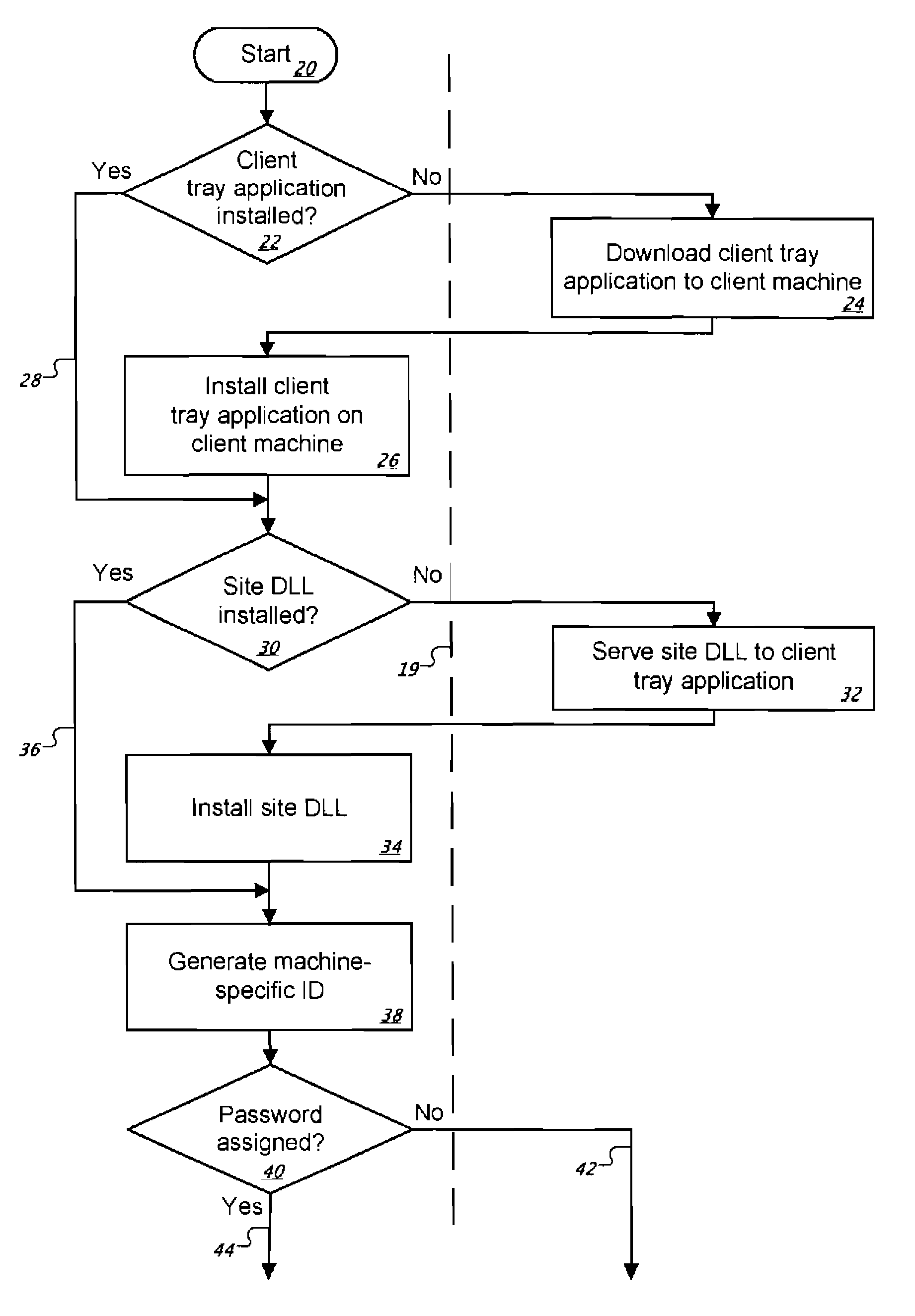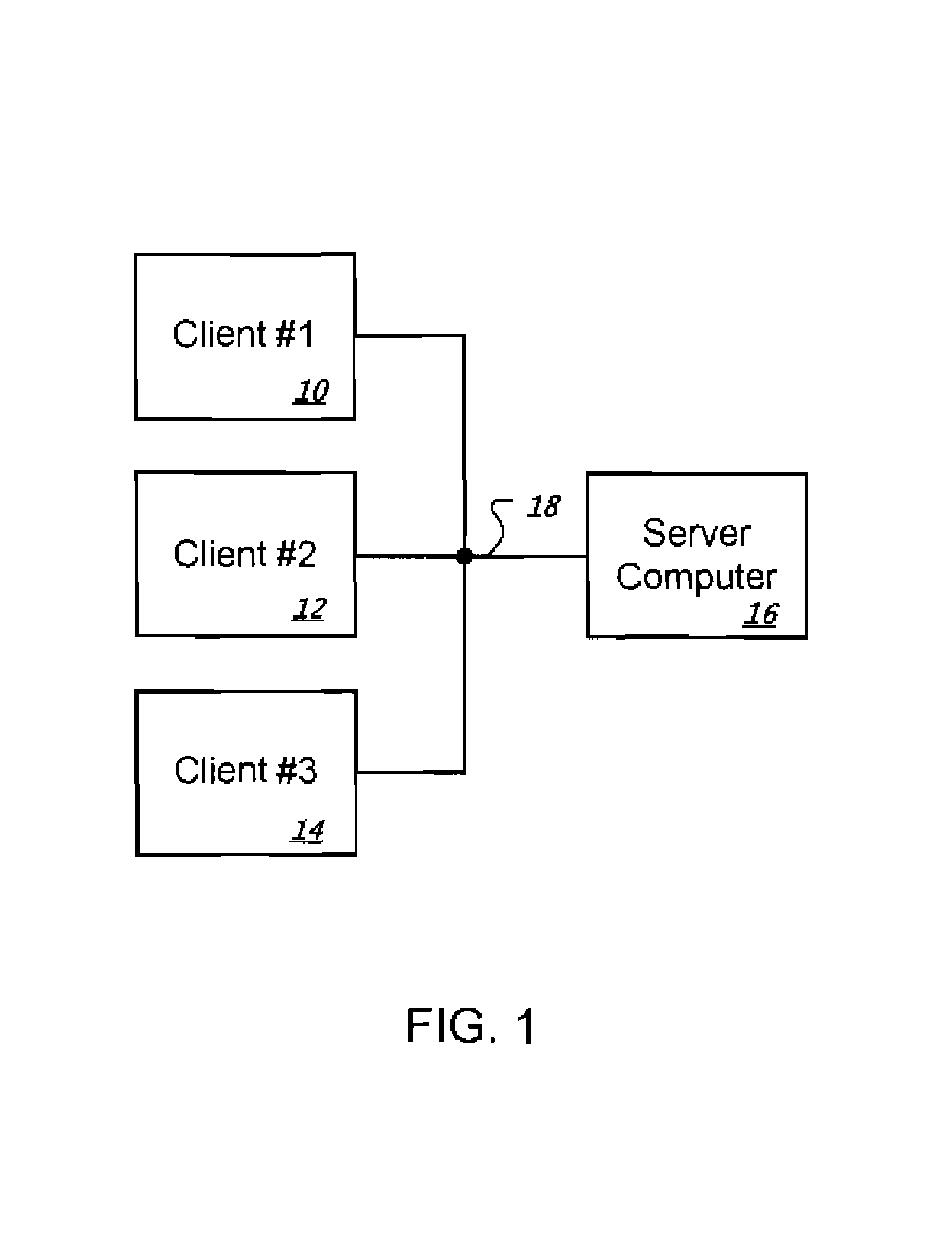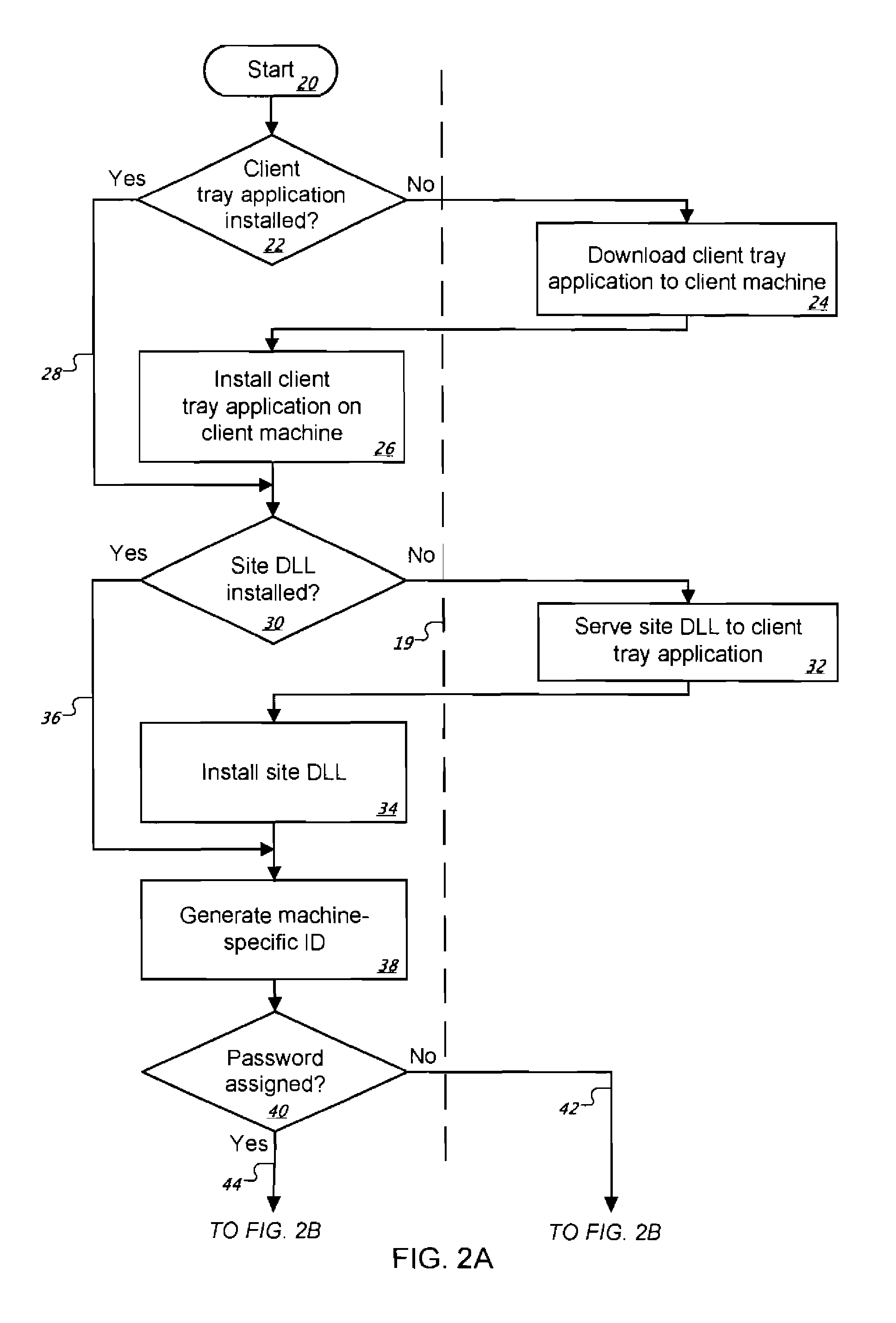Method for restricting access to a web site by remote users
a remote user and web site technology, applied in the field of client/server authentication system, can solve the problem that the client-side software refuses to recognize the client machine as being authorized to access data maintained on the server, and achieve the effect of simplifying the use and reducing administrative overhead
- Summary
- Abstract
- Description
- Claims
- Application Information
AI Technical Summary
Benefits of technology
Problems solved by technology
Method used
Image
Examples
Embodiment Construction
[0024]The present invention relates to a client / server user authentication system used with Internet or intranet Web sites and / or Web pages that require a higher degree of security than typical static or dynamic username / password methods offer. The present invention is intended for server administrators who require absolute control over the access rights of client-machines connecting to their server(s) and / or client-machines accessing specific content being delivered by their server(s) in a network environment. Such client machines may be in the form of desktop or laptop personal computers, pocket computers, personal digital assistants, cellular telephones, cellular pagers, or any other electronic devices capable of communicating data over a network. The present invention is ideally suited for protecting subscription-type Web sites (such as adult content sites), on-line banking sites, and corporate intranets that allow remote access by tele-commuters and travelers. FIG. 1 broadly il...
PUM
 Login to View More
Login to View More Abstract
Description
Claims
Application Information
 Login to View More
Login to View More - R&D
- Intellectual Property
- Life Sciences
- Materials
- Tech Scout
- Unparalleled Data Quality
- Higher Quality Content
- 60% Fewer Hallucinations
Browse by: Latest US Patents, China's latest patents, Technical Efficacy Thesaurus, Application Domain, Technology Topic, Popular Technical Reports.
© 2025 PatSnap. All rights reserved.Legal|Privacy policy|Modern Slavery Act Transparency Statement|Sitemap|About US| Contact US: help@patsnap.com



